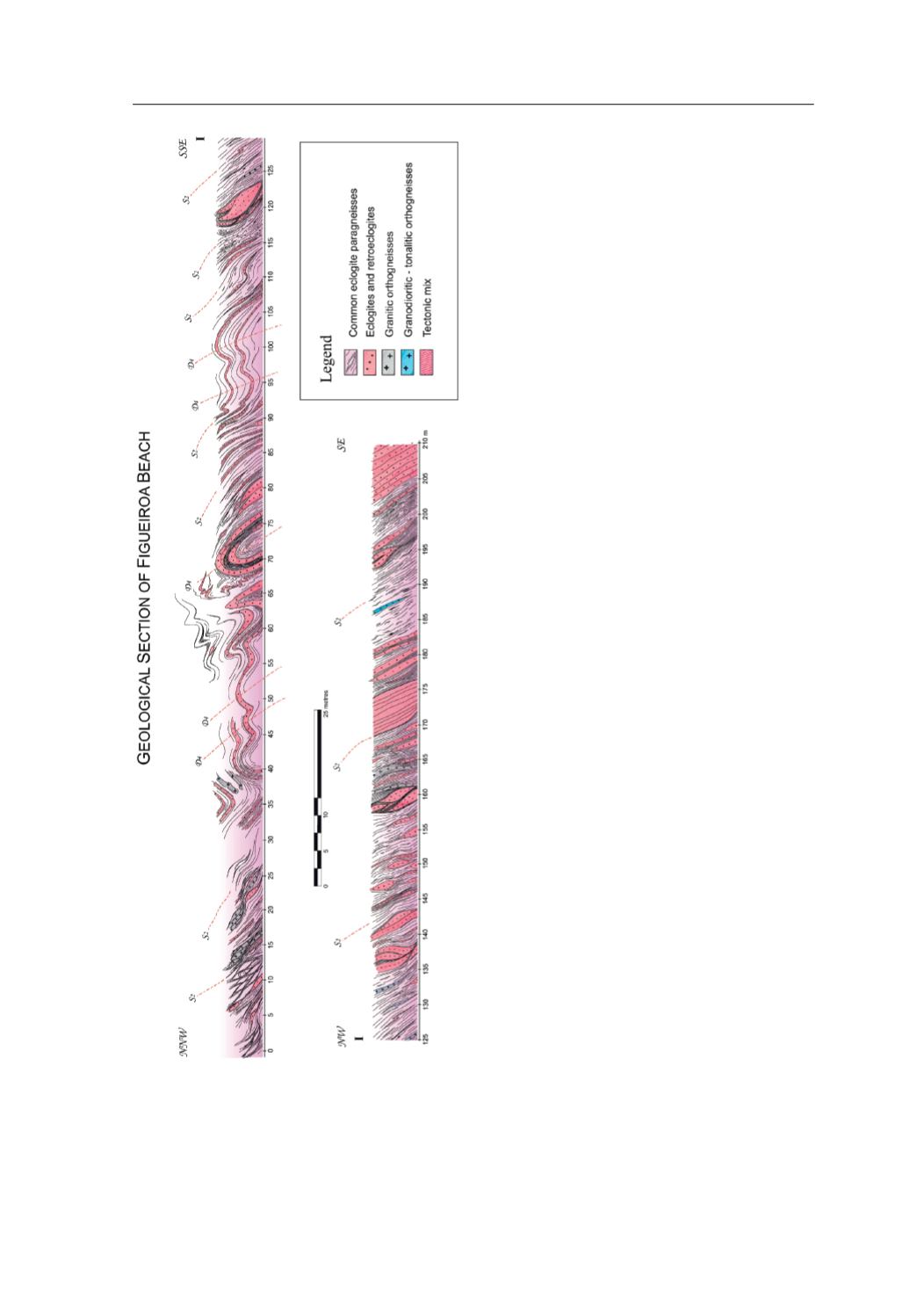
omphacite or plagioclase (Fig. 21h). The inter-
mediate slice mainly contains high-P granulites
and variably migmatised paragneisses, while
the upper slice consists of high-P granulites and
paragneisses as well as retrogressive garnet-bear-
ing amphibolites. The mafic layers defined by the
granulites and amphibolites preserve lens-shaped
inclusions of gabbros up to 2 km long (Fig. 20),
and dated at
c.
515 Ma (U-Pb in zircon; Fernán-
dez-Suárez
et al.
, 2007).
The gabbroic rocks of the Sobrado Unit show
a rather complete textural evolution, from un-
deformed types with intact igneous texture and
mineralogy (Cpx+Opx+Pl±Ol), through coronit-
ic gabbros and recrystallized coronitic gabbros,
to high-P granulites with grano-nematoblastic
textures and without any relict of the previous
stages. Such variability can be observed both at
map scale, where large, intact, lens-shaped gab-
bro bodies exhibit long tails of high-P granulites,
and at outcrop-scale where the whole transition
can be observed at metric scale. Transformation
from gabbro to coronitic metagabbro of the high-
est grade (Grt+Opx+Cpx+Prg+Pl+Ky+Crn), en-
tails a sequenze of complex coronitic types, de-
scribed by Arenas and Martínez Catalán (2002)
(Fig. 22). Altogether, they define a prograde P-T
path associated to subduction, with a peak pres-
sure calculated at 16 Kbar in this unit (Arenas and
Martínez Catalán, 2002). P-T conditions reached
during the high-P event have been calculated us-
ing Cpx-Grt thermobarometry for each tectonic
slice of the Sobrado Unit (Fig. 23). Pressure con-
ditions obtained this way provide only minimum
values, but temperature calculations are signifi-
cant and close to real values or slightly overes-
timated (Fe
2+
= Total Fe). These temperatures
range between 725 °C in the upper slice, and 850
°C in the intermediate one, to 875 °C in the lower
slice. Such range fits well with the strong migma-
tization experienced during the exhumation and
progressive hydration of these units.
The diversity and tectonothermal evolution of
the HP-HT rocks of the Cabo Ortegal Complex
were described in great detail in the pioneering
work of Vogel (1967), and later by Engels (1972)
and Gil Ibarguchi
et al.
(1990). In this complex,
the HP-HT Upper Units include two main jux-
taposed counterparts, the Cedeira and Capelada
units (Fig. 3). Both units have a similar litholog-
47
3. GEOLOGICAL FRAMEWORK
Fig. 24.
Detailed section of the Banded Gneisses Formation
(Capelada Unit) in the Figueiroa Beach, South of the
Masanteo Peninsula (Cabo Ortegal Complex). The regional
decompressive mylonitic foliation (S2) is affected by large
recumbent folds (not visible in this section) and by upright
folds (D4). The HP-HT fabric (S1) is completely overprinted
by S2 and can be only observed in few eclogite pods.








